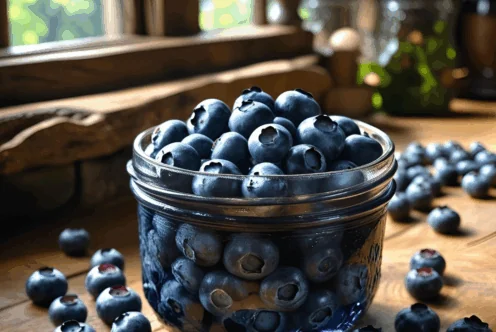Blog
Superstitions on the Farm

It seems like Friday the 13th is one of the only things that we, as a culture, are still superstitious about. Superstitions about Friday the 13th being unlucky abound and there are people who are so superstitious about that day that they will change their normal behavior in order to increase their personal safety during that 24 hour period. Many people assume that superstitions surrounding Friday the 13th must be a holdover from some earlier time, as most superstitions are. But according to historians, it is a relatively recent development with no real historical references before the 20th century. National Geographic explains that the emergence of Friday the 13th as a bad luck day comes from the combination of two long time superstitions that date back to biblical times, the fear of the number 13 and the fear of Friday. This got the team here at Fill Your Plate thinking about the origin of superstition and how superstitions continue to impact the way people live today.
It’s no secret that when it comes to being superstitious, farmers are one of the groups that lead the pack. From predicting the weather to knowing when to plant, many farming practices are rooted in superstition. This makes a lot of sense when you consider that superstitions develop as a result of experience and making correlations between seemingly unrelated things in order to predict future events. Long before farmers had satellite images and Doppler radar, they had the soil, the trees, the animals, and the sky to help them see into the future. For people who ate or starved based on the yield of each year’s crop, being able to use whatever information was available to their advantage could literally save their life and the lives of their families.
One of the main modern-day sources of farming superstitions is the Old Farmer’s Almanac. Since it was first published in 1792, the Almanac has used a mixture of methods to predict everything a farmer needs to know from sowing to harvesting. One factor that impacts their predictions, even today with the use of modern technology, is superstition. With a prediction rate that is close to 80% accurate over the last 100+ years, they are definitely doing something right.
Here are some of the most common, most interesting, and most unusual farming superstitions.
Weather
- Years that end in 8 will always have weird weather.
- Red sky at night, sailor’s delight. Red sky in the morning, sailors take warning.
- A killing frost in September means there won’t be another frost until after the middle of October.
Moon Phase
- Planting seeds when the moon is in fruitful signs which include Taurus, Cancer, Libra, Scorpio, Capricorn, and Pisces will provide a more bountiful harvest.
- Likewise, performing pest control, weeding, and digging should be done when the moon is in the barren signs of Gemini, Leo, and Virgo.
- Planting anything that grows above the ground, like flowers and vegetables, should be done when the moon is waxing, moving from new to full, in order to get the best results.
- Plants that mature underground like root vegetables must be planted in the timeframe that starts about 48 hours before the moon is officially full and 10 days following the full moon.
- If there is a frosty night when the moon is waxing it won’t damage plants.
Winds
- If the wind is frosty and it comes from the North, plants will be fine, if it comes from the South, it will be very harmful.
Planting
- Placing rusty nails or iron items in the garden when seeds are planted will help them grow.
- If you find a black snake in the garden it is a sign of a bountiful harvest.
- Pregnant women planting seeds guarantees that the seeds will thrive.
- Crops should be sown from North to South, never from East to West.
Animals
- If bees fly home and don’t return, rain is coming.
- Horses shaking their heads and acting restless and owls hooting more at night also foretell rain.
- Farm animals with fur will get in thicker coats when the winter is going to be harsher than normal.
- Beavers build bigger dams when the coming winter is going to be especially cold or harsh.
- If you add caraway seeds to the feed for your chickens it will keep them from wandering.
Plants
- Bright red holly berries mean that winter will be long.
- If nuts and berries remain on the trees after the leaves have fallen, it will be a hard winter.
- Oak trees that still have leaves in October portend an unusually cold winter.
Related articles
- A Picture of Arizona Agriculture (fillyourplate.org)
- Celebrating the Centennial Series (fillyourplate.org)
- Fill Your Plate with Chips and Dip (fillyourplate.org)

















